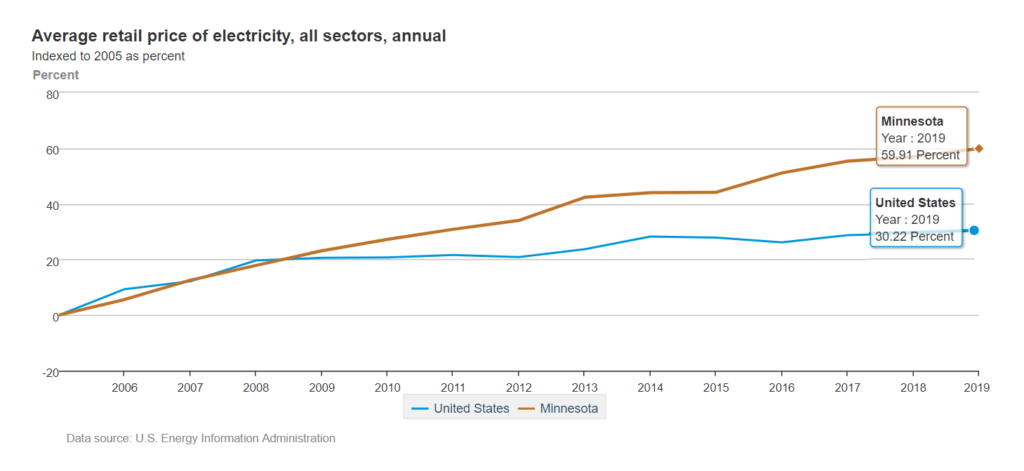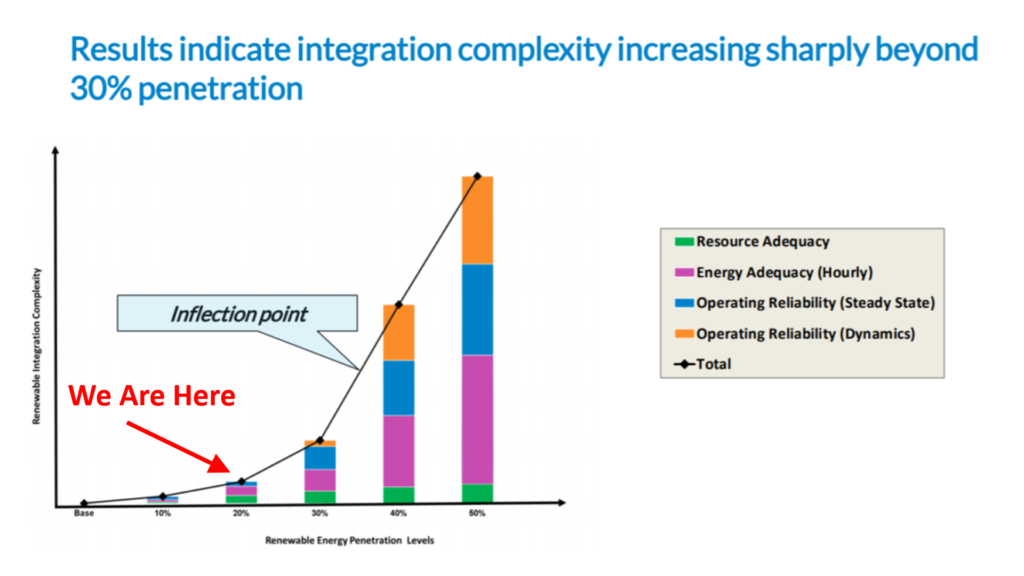Wind and Solar Developers Want To Force You To Pay Their Transmission Costs
Wind and solar energy are closer to going away entirely than they are to being the future of energy. Here in the Midwest, hundreds of wind and solar installations, representing thousands of megawatts (MW) of installed capacity, have been cancelled because their developers didn’t want to foot the bill for the transmission upgrades that would be necessary to bring these projects online.
According to an article in Midwest Energy News, which is run by Fresh Energy, wind and solar projects are not financially viable unless the costs for transmission upgrades are saddled on to customers like you.
“In all, 245 clean energy projects that had reached advanced stages of development were withdrawn between January 2016 and July 2020, the study found. While there are various reasons a project may be withdrawn, experts and developers say that especially in the western region of [the Midcontinent Independent Systems Operator] MISO, congestion and related grid upgrade costs are the main factors.
EDP Renewables recently withdrew a planned 100-megawatt wind farm in southwestern Minnesota from MISO’s queue for interconnection to the grid, because MISO said it would have to pay $80 million for grid upgrades. The company, which was in the midst of negotiating a power purchase agreement with a telecommunications company, had estimated the work would cost about $10 million and has since called the project off, said director of government affairs Vanessa Tutos.
It’s one of several that have faced a similar fate.
“What we’ve seen in the data and reports from developers is that the number of projects dropping out as a result of high network upgrade charges has significantly increased over time,” said John Moore, director of NRDC’s Sustainable FERC Project. “The network is reaching its limit.”
These are massive costs for transmission upgrades. According to the Energy Information Administration, it costs about $1.3 million dollars per MW to install wind turbines. This means a 100 MW facility would cost about $130 million. The additional transmission costs of $80 million are about 60 percent of the cost of building the wind turbines in the first place. Rather than realizing that wind and solar are not financially viable, renewable developers simply want to make you pay for the transmission expenses, instead of them.
“Power generators typically pay for the interconnection lines needed to get their power to the grid, and EDP regulatory and market affairs director David Mindham said there are few concerns about this arrangement. But as the long-distance, high-voltage interstate power lines are too congested to serve new projects, developers are required to pay for upgrades on these lines if they want to build.
The developers and clean energy advocates say that as these upgrades benefit many parties across multiple states, the needs and costs should instead be predicted farther in advance by MISO and passed on to a wider range of stakeholders, including ratepayers. MISO declined to comment for this story.
“Generators absorb those costs up front,” which is not feasible in many cases, Mindham said. “We need a better cost-sharing mechanism between generators and other beneficiaries of the system.”
What benefits are the developers referring to, exactly? Minnesota’s experiment with wind and solar has been an abject disaster. Minnesotans have spent more than $15 billion on wind turbines, solar panels, and transmission lines, and electricity prices have increased nearly 30 percent faster than the national average since 2005 as a result, according to the Energy Information Administration.

Now, wind and solar developers want Minnesota families to pay even more to build transmission for energy sources that don’t work when the weather doesn’t cooperate. The article continues:
“The current process ignores the reality of the way the grid is heading — it used to be that you’d build your generating facility close to load, but renewable resources need to be sited where the resource is best … and often in far-flung locations, the transmission system is not robust,” said Nicole Luckey, vice president of regulatory affairs for Invenergy. “Customers are seeing the benefits but they’re not funding those upgrade costs.”
Invenergy Senior Vice President Kris Zadlo noted that there were 27 projects submitted into MISO’s February 2017 west interconnection cluster representing 3,421 megawatts. MISO studies initially showed the need for about $3.4 billion in transmission upgrades for those projects, coming out to about $1 million per megawatt to interconnect. “To put this value in context, you are almost paying as much to interconnect as you are to build a renewable resource,” Zadlo said, and all but two of the projects were ultimately canceled.”
“There’s a breakpoint where bearing those costs makes the renewable project unprofitable and you just have to drop out of the queue,” Zadlo said.”
Renewable advocates need the public to believe that wind and solar are still the future of energy. If the public doesn’t believe this, the bottom falls out of their pitch to help themselves to more of your money. However, these same advocates are ignoring the reality that the grid cannot head toward higher levels of renewables without sacrificing reliability and affordability, as we have seen rolling blackouts in California.
The problem is that it becomes exponentially more difficult to incorporate more wind and solar on the electric grid over time, not less difficult, according to MISO. This is why the Star Tribune’s editorial “It’s Minnesota’s time to move ahead with clean energy,” was so pitfiully uninformed. The easy and affordable part of adding wind turbines and solar panels to the electric grid is over. It’s sharply uphill from here.

If your product requires federal tax subsidies, mandates, and other people to pay for your transmission expenses, it isn’t a viable product. This is especially true if your wind turbines can’t operate if it gets too cold in Minnesota, and “paying people to clean [snow] off panels is simply too expensive.”
Rather than squandering billions of dollars on wind turbines that only last 20 years, solar panels that last for 25, and transmission infrastructure to the middle of nowhere, those who claim climate change will be the death of humanity should be pounding on the table to legalize new nuclear power plants in Minnesota, and to change the Next Generation Energy Act to allow large hydroelectric generators to be classified as “renewable.”
Their focus on unreliable, expensive, and short-lived wind and solar projects suggest they don’t care very much about the environment.